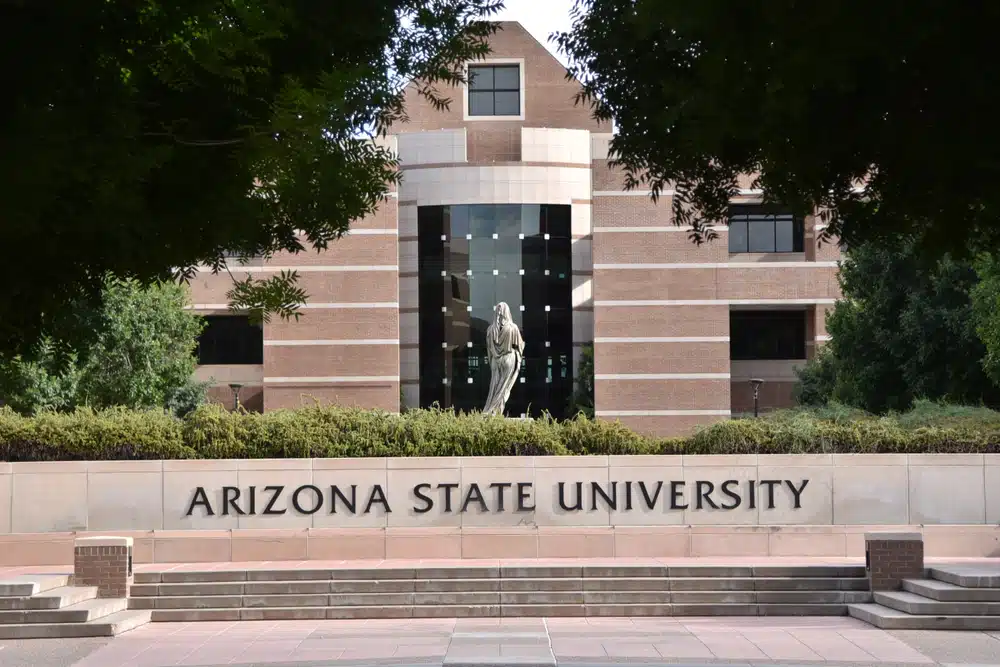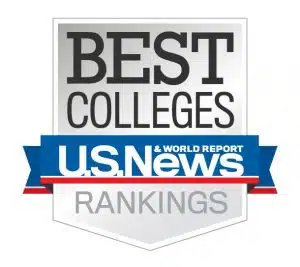Unlike schools with strict application deadlines, colleges with rolling admissions let you apply over a longer period to give you a better chance to secure a spot when you’re ready.
According to the annual survey by U.S. News & World Report, out of the ranked national universities that provided data, 113 offered rolling admissions. So you definitely won’t want to miss the opportunity to get into these colleges with their excellent reputations.
In this article, we’ll help you understand what colleges with rolling admission are all about and introduce you to some top schools that offer it. We’ll also answer common questions and share tips on how to apply to give you everything you need to make rolling admission work in your favor for your college application journey.
- Colleges with Rolling Admission
- How Does Rolling Admission Work?
- How to Apply for Colleges with Rolling Admission
- Frequently Asked Questions
- Takeaways
Colleges with Rolling Admission
Colleges with rolling admissions provide a flexible application process that allows students to submit their applications at various points throughout the year. This means students can apply when they feel ready rather than adhering to strict deadlines set by traditional admissions processes.
Rolling admissions simplifies your application process, but that doesn’t necessarily mean your chances of acceptance are guaranteed. Reputable schools like Purdue University have competitive acceptance rates, with Purdue sitting at around 50%. It’s also ranked 18th among public universities and is noted for having one of the best undergraduate engineering programs at #8. So approach them with the same seriousness and diligence as you would with traditional schools.
What is rolling admission in college?
Rolling admission in college is an admissions policy used by many colleges and universities, so students can apply at any time during the academic year until the program reaches its capacity. This system differs from traditional admissions processes that have set deadlines. With rolling admission, colleges evaluate applications continuously, where they provide students with decisions typically within a few weeks.
But remember that many colleges with rolling admissions have limited spots available. Therefore, applying early in the cycle can increase the chances of acceptance. Students should proactively prepare their application components, such as essays, recommendations, and test scores, so they can submit their applications as soon as the admission window opens.
Here’s a list of some famous and top schools with rolling admission.
| School | Acceptance rate | Location |
| Michigan State University | 84% | East Lansing, MI |
| Pennsylvania State University | 54% | University Park, PA |
| The University of Alabama | 76% | Tuscaloosa, AL |
| University of Maine | 96% | Orono, ME |
| University of New Haven | 81% | West Haven, CT |
| University of Pittsburgh | 50% | Pittsburgh, PA |
| Arizona State University | 90% | Tempe, AZ |
| University of Iowa | 85% | Iowa City, IA |
| University of Mississippi | 98% | University, MS |
| Purdue University | 50% | West Lafayette, IN |
| The University of Kansas | 87.8% | Lawrence, KS |
| Michigan Technological University | 53% | Houghton, MI |
| Iowa State University | 89% | Ames, IA |
| Eastern New Mexico University | 28% | Portales, NM |
| Washington State University | 85% | Pullman, WA |
| Mississippi State University | 76% | Starkville, MS |
| University of South Florida, Sarasota-Manatee | 24% | Sarasota, FL |
| University of Missouri | 77% | Columbia, MO |
| Kansas State University | 95% | Manhattan, KS |
| University at Buffalo, SUNY | 69% | Buffalo, NY |
| Rochester Institute of Technology | 71% | Rochester, NY |
| Rutgers University, Camden | 78% | Camden, NJ |
| Rutgers University, Newark | 79% | Newark, NJ |
| Indiana University, Bloomington | 80% | Bloomington, IN |
| University of Maryland, College Park | 45% | College Park, MD |
Looking at the table of colleges with rolling admissions, we can observe differences in acceptance rates among institutions. Arizona State University, with 90%, the University of Maine, 96%, Kansas State University, 95%, and the University of Mississippi, 95% showcase relatively high acceptance rates. These universities are more accessible and have a larger pool of applicants to secure admission, which can be appealing for students seeking a less competitive entry process.
Meanwhile, Eastern New Mexico University, with 28%, and the University of South Florida, Sarasota-Manatee, with 24%, reveal lower acceptance rates within the rolling admission framework. These institutions may be more selective in their admissions criteria. Students considering these institutions should approach their applications with a strategic mindset and give more time to strong academic performance and relevant extracurricular involvement to have more chances of acceptance.
Get your application in as early as you can as well. The sooner you apply, the better your chances of snagging a spot at your dream school. Plus, many colleges offer scholarships on a rolling basis, so applying early could mean more financial aid for you. So don’t wait around! Put your best foot forward, and get that application submitted.
How Does Rolling Admission Work?
Applying to colleges with rolling admissions offers flexibility and a more relaxed timeline than traditional admissions.
It’s not always the case. For instance, Michigan Tech usually starts reviewing applications in September, and once they do, students can typically expect a decision within 3-5 weeks. Note that the response timeline can vary, and decisions may not always be delivered as quickly as anticipated.
For the most accurate and up-to-date information regarding application processing times, it’s advisable to check directly with Michigan Tech’s official admission page or admissions office.
So rolling admission can vary from school to school, but there are some general patterns that students should know.
Timing
Typically, applications for colleges with rolling admission open in the fall, usually around September. This is great news for students, as it gives them a long window to prepare their applications without the stress of a hard deadline. Some colleges may even continue accepting applications into the spring or summer, depending on their enrollment needs.
Response time
One of the most appealing aspects of rolling admission is the quick response time. Most colleges aim to make decisions within a few weeks after receiving applications. This means students won’t be left waiting for months to hear back about their admission status. If you submit your application in October, you might hear back by November, so you can plan your next steps sooner rather than later.
Final deadline
While there is typically no strict final deadline for rolling admissions, students should be aware that popular programs can fill up quickly. Schools like Arizona State University and Purdue University see high demand for certain majors, so it’s advisable to apply as early as possible. Submitting applications in the early months of the cycle can give you more chances of acceptance.
How long does rolling admission take?
The length of the rolling admission window can differ across institutions. Some schools keep their application process open until the start of the term, while others may close applications once they have met their enrollment goals.
Remember that rolling admission doesn’t mean there are endless spots available. If a specific program or college catches your eye, submit your application as early as possible. By doing so, you position yourself favorably and increase your likelihood of acceptance.
How to Apply for Colleges with Rolling Admission
Applying to colleges with rolling admission gives students a unique advantage for those looking for a bit more flexibility than the traditional admissions schedule they typically allow. Like regular admissions, the application process involves gathering materials such as transcripts, test scores, and recommendation letters. However, rolling admission colleges let you apply within a broader timeframe with quicker response times.
Here’s what to keep in mind when applying to these schools.
1. Research their deadlines
While many colleges set a single application deadline, colleges with rolling admissions operate on a more flexible schedule and usually open their applications in the fall. Each school may have a unique timeline. Some even accept applications into spring or summer if there are spots left. Research each school’s timeline to avoid missing out.
2. Prepare your application
Since colleges with rolling admissions review applications on a first-come, first-served basis, having all materials ready early makes a difference. This includes transcripts, test scores, and recommendation letters if required. Some schools may have different requirements. For instance, art programs may require portfolios. Double-check specific requirements for each college to make sure you’re prepared.
3. Review and polish your application
After gathering your application materials, take the time to carefully review each document before submission. Mistakes, whether in your transcripts or personal statements, can lead to unnecessary delays or complications in the admissions process.
It’s also a good idea to ask a trusted teacher or mentor to look over your application. A fresh set of eyes can catch some errors you might have missed in your application documents. Consider writing a compelling personal statement that highlights your unique experiences and aspirations, as this can make your application stand out. Remember, the goal is to present yourself as a strong candidate, so putting in the effort to polish your application can pay off in the long run.
4. Submit early
Applying early increases your chances at colleges with rolling admissions, especially for competitive programs and scholarships, which are awarded on a first-come basis. Submitting applications within the first few months, usually September to December, helps you avoid closed programs. Early applicants receive quicker responses and have better access to program spots and financial aid.
5. Monitor your application status
After submitting your application to colleges with rolling admissions, keep an eye on your email and application portals. Since decisions can be quick (sometimes within weeks), monitoring these channels is important for updates on the next steps, like interview requests or additional documents. Setting reminders to check the status regularly will help you stay informed and ready.
6. Stay flexible when applying
While colleges with rolling admissions are flexible, popular programs may fill up quickly, so it’s wise to have backup options. If a business program at one college closes, applying to other colleges with rolling options gives you alternatives. Keep a shortlist of other schools you’re interested in to stay adaptable.
Although colleges with rolling admissions offer flexibility, treat these applications with the same seriousness as traditional deadlines. A polished, thorough application can improve your chances of acceptance, so take the time to review your essays, transcripts, and recommendations to present your best self. Good luck!
Frequently Asked Questions
1. Can I apply to multiple colleges with rolling admissions?
Yes, you can apply to as many rolling admission schools as possible. Just be sure you can manage each school’s application requirements and deadlines. Applying to multiple schools can maximize your options, giving you more choices as decisions come in.
2. Do rolling admission schools have final deadlines?
Many rolling admission colleges accept applications until they reach capacity, so deadlines vary. Some schools, especially those with popular programs, may set informal “priority deadlines” around spring. Applying before these dates is advantageous, especially for scholarships and financial aid.
3. Is rolling admission easier to get into?
Not necessarily. Rolling admission doesn’t always mean lower standards. Schools review applications carefully, so applying early can improve your odds if programs fill up quickly. Rolling admission offers flexibility, but competition can be strong for popular programs.
4. Can I get financial aid with rolling admission?
Yes, rolling admission schools typically offer financial aid to eligible applicants. However, funds may be distributed on a first-come, first-served basis, so applying early can increase your chances. Priority deadlines are common for financial aid, so aim to submit your application promptly.
5. Do all schools with rolling admission review applications right away?
Most rolling admission schools review applications as they receive them, giving prompt responses. However, policies vary, so it’s best to check each school’s admissions process. Some may follow specific review timelines despite the rolling admissions format.
Takeaways
- Colleges with rolling admission offer a flexible application window, letting students apply as long as spaces remain available. This flexibility can be a huge advantage, especially if you’re still deciding.
- Applying early to colleges with rolling admission gives you a better shot at landing a spot, as popular programs tend to fill quickly. Beat the rush by submitting your application as soon as possible.
- Success with colleges with rolling admission requires a strong, thorough application. Take the time to prepare your materials and showcase your strengths to stand out.
- Each college may have different policies, so always check deadlines and requirements for colleges with rolling admissions to stay informed. This is important so that you won’t miss any specific criteria.
- Feeling unsure? Contact a college admission counselor to help you navigate the application process for colleges with rolling admission. This is to give you guidance based on your admission goals.








































